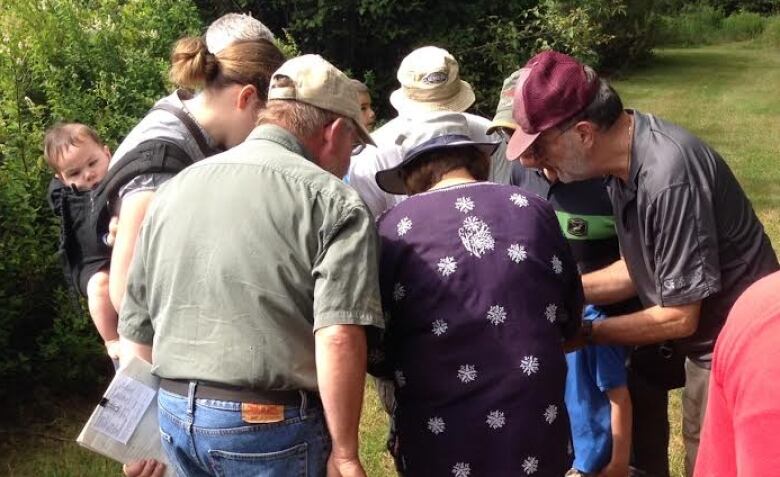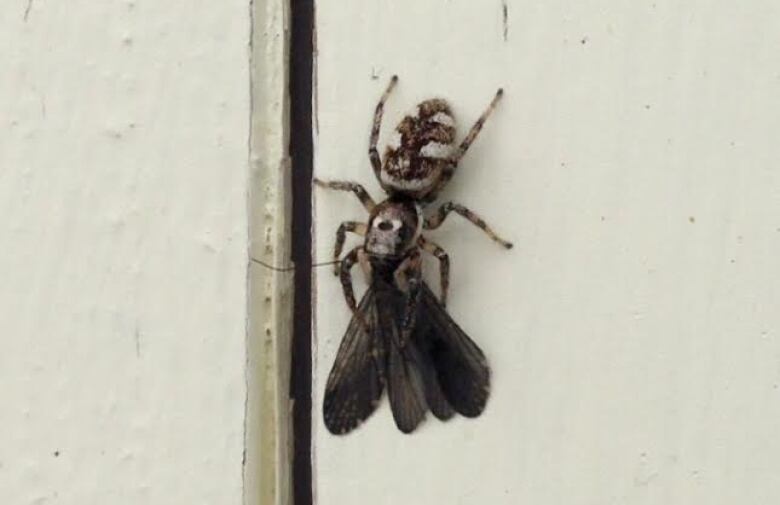Spider species tally triples on P.E.I. thanks to citizen census
'A lot of our collectors are asking: what can we help with next?'

Some enthusiastic citizen scientists have helped to triple the tally of spider species on Prince Edward Island.
Nature PEI put out a call for help last summer with a spider census.
Some collectors kept bringing in samplesBob Harding, Nature PEI
"There were a few people who were very prolific," observed lead researcher, UPEI PhD student Kyle Knysh. "They collected hundreds of spiders."
Tally triples

"We've tripled the number of known species on the Island," said Knysh, noting the specimens have been sent off-Island for verification and a final tally is still months away.
The volunteers used sweep nets to brush foliage and collect the spiders, as well as pit traps, which consist of cups buried in dirt up to the brim.
They collected 4,300 specimens over the summer and into the fall.

As part of his studies inEnvironmental Biology,UPEI student Caleb Harding put them in individual vials and identify them by family.
A tangled web of spider samples
Harding admits it was a slow process at first, but when he got going, he could identify the family in about ten minutes.
Making the work even more painstaking, most of the thousands of spiders were immature and could not be used. The adult specimens were properly preserved, labelled and shipped to a specialist hired as part of the project.

As he sorted, Harding started seeing some patterns.
"The big guys that are on everybody's houses, they always wanted to show the biggest one they could find so we had a bunch of those," laughed Harding. "Even though it was the specimen over and over again, it was really good seeing how widespread it was on P.E.I."
Invasive species
There were surprises, says Harding, including two or three new families of spiders. And 11 per cent of the spiders were invasive species, or not native to the Island.

"A lot of them are found inside peoples' houses so it's possible that they came in through all different means," said Harding.
Knowing more about the Island's spider population is important for the future, especially considering the number of non-native spiders, said Knysh.
"A species that is introduced often competes with our native fauna and can be negative for our native species," he explained.
Keen collectors
Nature PEI's Bob Harding is excited by the results of the spider census, but also the level of participation by Islanders.
"It's created a great deal of enthusiasm and confirmed that this citizen science approach is very effective," said Harding. "While we stopped collecting in the fall, some collectors kept bringing in samples."
The group had to politely ask the helpful volunteers to stop and suggested theytake photographs of spiders for Nature PEI instead.
"A lot of our collectors are asking: what can we help with next?"













_(720p).jpg)


 OFFICIAL HD MUSIC VIDEO.jpg)
.jpg)



























































































